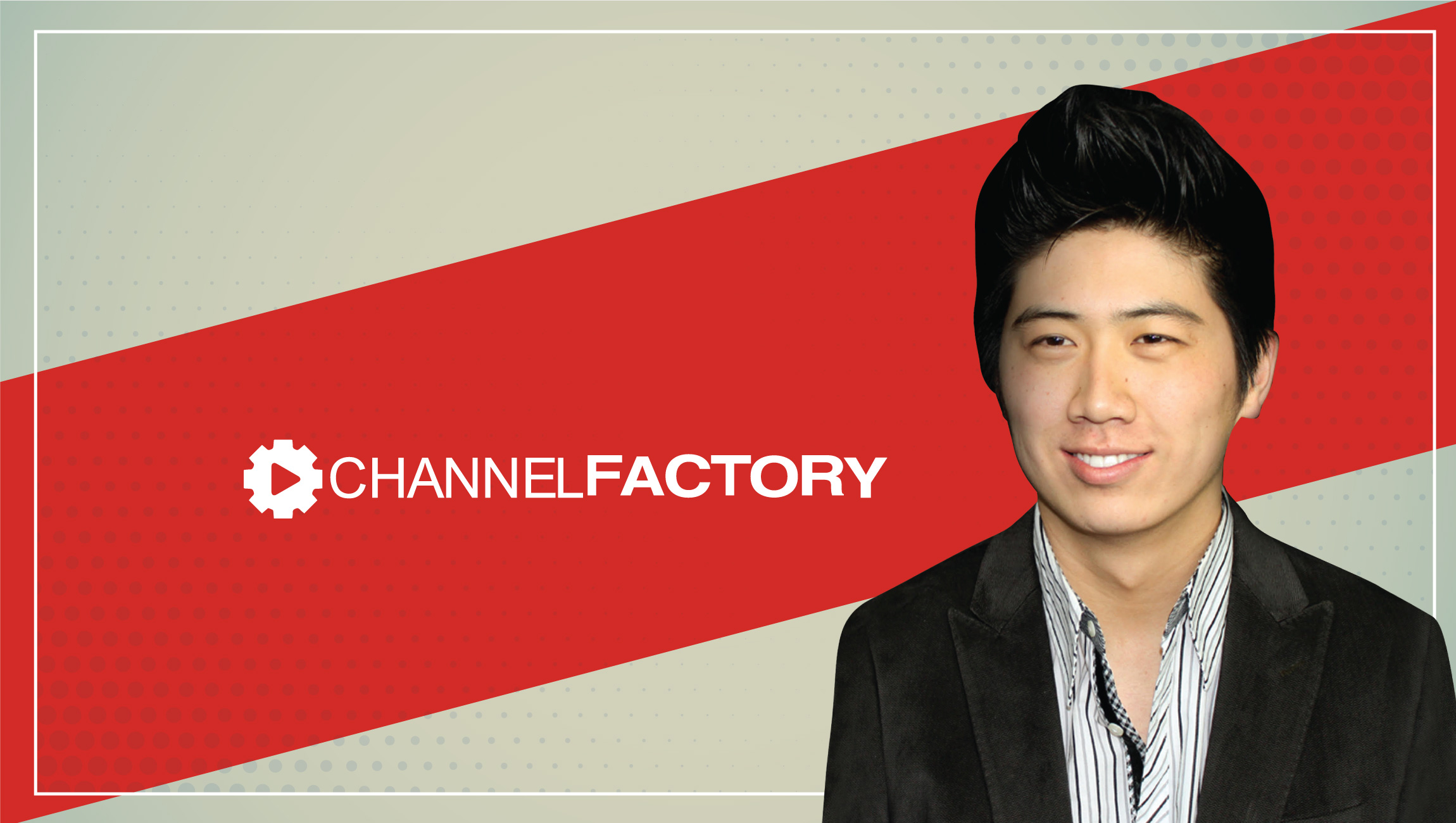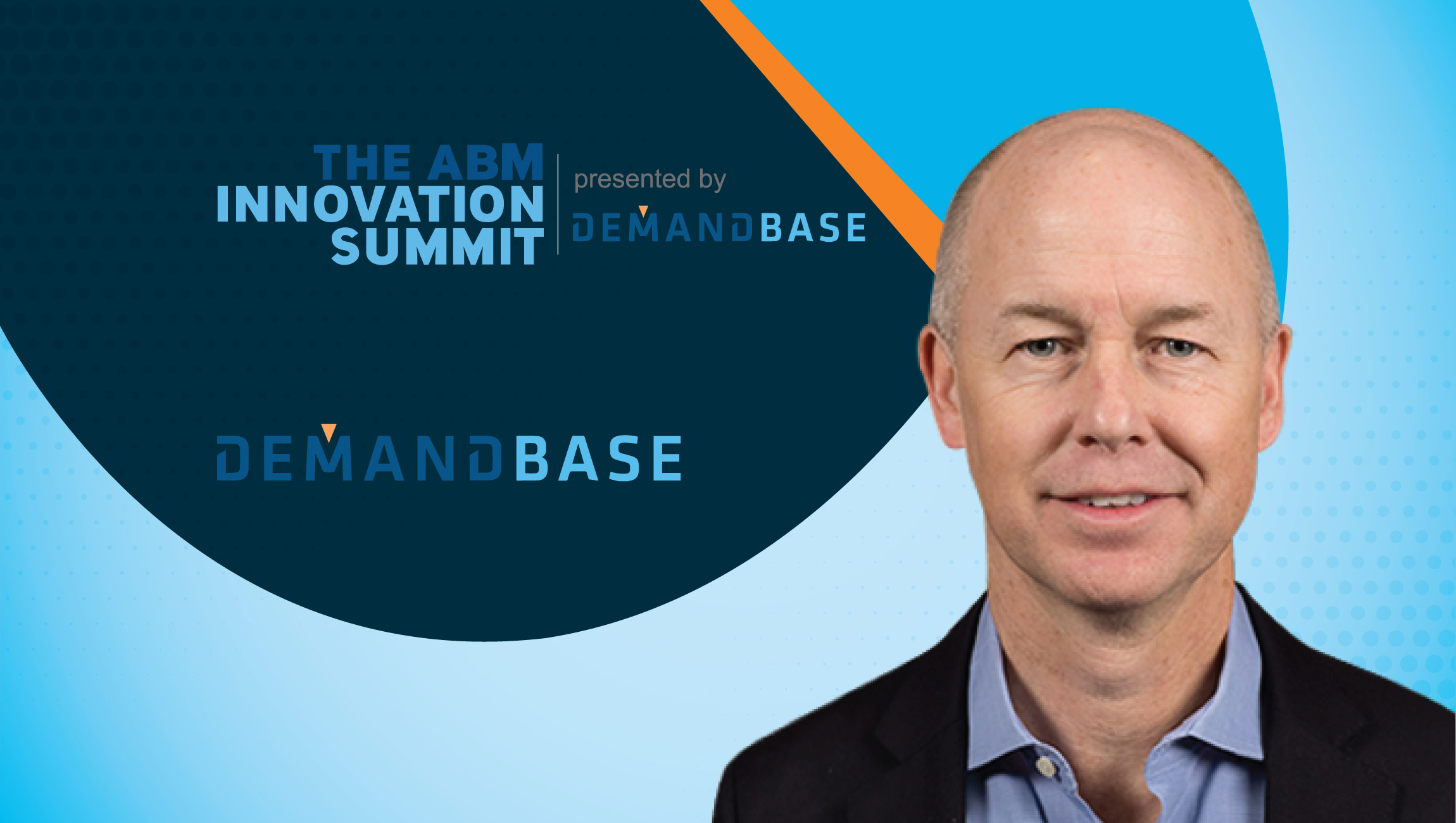Tell us about your role and journey into technology. How did you arrive at Channel Factory?
In 2010, I was in the middle of completing my education at Rice University; double majoring in piano performance and economics. During that time, I launched Yellow Thunder Media, an agency specializing in viral Content Marketing that worked with most of the major movie studios. A year later, I dropped out of Rice and went all in on the business. Yellow Thunder Media was the first iteration of what Channel Factory has become today. In 2014, we built a comprehensive software platform that helps both brands and agencies buy YouTube and digital video more effectively. That software, ViewIQ has enabled Channel Factory to create high-performing, brand-safe media campaigns for brands across the world.
As a Marketing Technology CEO, what has been your most challenging assignment in the industry? What advice and lessons do you have for other MarTech executives?
Building and maintaining a solution for advertisers in a changing and dynamic environment. For example, in the earlier days of YouTube, data was more easily accessible through their public API. But as data protection and privacy became more of a hot button topic, networks began to close off access to their data. Data is the driving force behind contextual advertising, and without the proper information, it can be difficult to align messaging with a target audience. It became clear that we would need to be the bridge between advertisers and publishers. ViewIQ was a critical innovation that allowed us to achieve scale and precision within the walled-garden network of YouTube and Google.
ViewIQ integrates directly with YouTube creators and grants access to their first-party data in exchange for tools to improve their monetization and grow their channels. Even with roadblocks put up by our industry’s largest companies, we are able to deliver value for both sides. That focus on a win-win is important for all of us to keep in mind as executives in this industry.
How do you envision bringing more credibility and safety to online video distribution and data platforms?
In terms of safety on YouTube, this will require a multi-pronged approach. The first line of defense should always include whitelisting and blacklisting. More and more brands are using whitelists and blacklists as an exclusive content targeting strategy to accomplish both content alignment and brand safety objectives. Dynamically updated blacklists integrated with first-party publisher data allow for in-depth screening of video audio-transcripts, in addition to other metadata filters and brand safety algorithms.
There should also always be active ad fraud prevention in video that includes monitoring first-party creator data and channel traffic sources. Walled-Garden Networks introduce several challenges with regards to ad fraud prevention. The restriction of data complicates traffic-source attribution, and advertisers are forced to rely on secondary data sources and/or implementation of proprietary solutions. First-party creator data paints a clearer picture and allows us to inspect exactly where that creator’s traffic is coming from, which can determine whether or not their traffic is legitimate or fraudulent.
What role do influencers play in this ecosystem?
Influencer data provides insights for better ad performance. Data is king when it comes to driving content alignment, brand safety and business results. While this data can be difficult to get a hold of, partnering directly with influencers can provide robust intelligence on consumer audience behaviors and content consumption, and provide the basis for enhanced segmentation, deeper brand safety screening, and targeting on and off of YouTube.
What valuable lessons did you learn from last year?
- Brand Safety vs. Suitability
As brand safety increasingly became an issue among large brands and advertisers, Google/YouTube, gradually rolled out additional layers of protection to ensure safe media placements. Although these new protections have created safer campaigns, many of them are reactive and one-dimensional: for example, some content risk filters eliminate insensitive placements but fail to eliminate placements which, while tasteful, are entirely off-message. “Brand safety” has evolved into “brand suitability,” whereby contextual relevance combined with safety considerations lead to better performance.
- YouTube for Mid/Lower Funnel Performance
Most advertisers think that YouTube is purely for brand awareness, but it can be utilized as a mid and lower funnel platform as well. This is largely a result of failing to take a multi-channel attribution model in favor of a more myopic, last-click attribution model, which often comes out in favor of platforms such as Facebook. However, 33% of all shoppers go to YouTube before making a purchase decision, and there are ways of effectively driving sales outcomes via the channel. Contextually targeting content that drives purchase intent can have a significant impact on sales. For example, during the March Madness season, a quick-service restaurant chain might consider launching a measurable, direct-response campaign around game slots to drive delivery orders.
What is your vision for Mobile Video Marketing and how do you see Channel Factory filling the gaps in demand-supply for better customer engagement platforms?
More than half of all video content is consumed on mobile devices, so it’s important that advertisers focus on device targeting and appropriate video formats for those devices such as mobile vertical orientation or 1:1 aspect ratio. Many videos on mobile are also viewed without sound, so it’s important that videos are highly visual. Additionally, advertisers who are trying to reach younger audiences may want to optimize towards mobile due to higher usage by younger demographics.
Tell us about your go-to strategies to support rapid growth and the lessons learned through periods of massive shift and transition.
Startups can often get distracted by rapid expansion, but it’s important that they stay grounded in their vision. Sometimes, things are happening so fast that it can be easy to lose sight of what you originally set out to do. I constantly try and “vision-check” myself, examine what our collective goals are, and correct the ship if we stray off-course. Of course, it’s natural that the vision might change, but should that be the case, it’s critical that those changes are communicated with concision. I cannot stress the importance of proper communication enough; everyone needs to be on the same page. A CEO’s job is not just to deal with operational management, but to ensure everyone’s objectives are aligned with our collective vision.
How do you mentor your Product Marketing and B2B Commerce teams at Channel Factory? Give us a sense of your collaboration with the CMO, CIO and CTO at Channel Factory.
I strongly encourage active collaboration between our departments. Assuming any colleague is only knowledgeable about their designated role is a discredit to both myself and the individual. Interdisciplinary growth is what makes people stronger both professionally and personally, so it’s always my goal to give our teams opportunities to shine outside of their day-to-day operational tasks. This is especially valuable for the management and offers them unique perspectives on how they can optimize and engage their respective departments.
Establishing our goals and direction is always a collaborative effort and is never decided based on one person’s opinion alone. The company hosts quarterly all-hands strategy sessions and twice a year, our global offices all meet in Los Angeles for team-and-vision-building. We also invest heavily in conference attendance and on-site professional development for our employees, catered to their individual preferences and unique needs. Finally, I prioritize one-on-ones with all my employees, often traveling for that purpose alone. Our product is intellectual capital and client-care distilled in services and software — knowledge sharing and individual development are critical to that mission.
What does your technology community look like? Who do you meet at events and conferences to discuss technology?
I maintain a wide network of relationships with other technology executives both inside and outside of our industry. I love to learn about the various projects other people are investing their time and resources into. I like to meet people at all levels of a company to have a much better understanding vs. an overview from an executive.
Which Marketing and Sales Automation tools and technologies do you currently use?
- Salesforce – Sales + CRM
- Autopilot – Email Marketing
- Outreach – Marketing + Sales Cold Email Outreach
What are your predictions on the most impactful disruptions in Marketing and Sales Technology for 2019-2020?
- Blockchain – Blockchain is uniquely positioned to have a significant impact on the future of marketing and advertising, especially with regards to ad fraud and attribution. Ad fraud costs advertisers billions of dollars every year, but blockchain creates much-needed transparency that will allow advertisers to determine which views are real and which are fraudulent. Channel Factory is actively integrating blockchain technology with our software to create a new layer of transparency and accountability. Soon we will start sharing blockchain data with clients such as campaign performance metrics, whitelists, and blacklists on the blockchain in the interest of clarity and immutability.
- AI – AI is quickly becoming a staple of the Marketing Technology industry, especially within the realm of programmatic advertising. The evolution of AI will lead to huge improvements in online advertising such as better audience alignment, higher-performing campaigns, and safer placements. However, the need for human review will be forever present. While AI-enabled Machine Learning has become increasingly reliable, it’s not foolproof, and can’t replace the creative elements that humans bring to the table. For example, we employ Machine Learning technology to flag viral content that has garnered an uncharacteristic rise in engagement. But, this process still struggles to determine video context, so additional human review is still necessary.
- OTT & Connected TV – The cord-cutting revolution is in full swing and OTT-streamed content on connected TVs offers new ways to follow audiences beyond the living room. While measurability and attribution models mature, particularly with Nielsen’s Digital Ad Ratings system entering the equation, as well as DSP integrations with major OTT providers, options already exist to target linear TV show fans on YouTube, as well as big-screen consumers of YouTube content, which may soon include its Originals content. TV device type targeting allows advertisers to reach audiences opting for the CTV YouTube experience. Brands can also target the linear TV-show fandom via user-generated show-related fan-content on YouTube. Other strategies include using YouTube’s real-time Triggers and Nielsen geo-fencing, which allow brands to target ads around TV slots for second-device viewer experiences as well as targeting specific locales.
What startups in the technology industry are you watching keenly right now?
Startups in AI. The digital advertising ecosystem has been dominated by search-based advertising, and I think AI systems such as Alexa and Siri will spawn a new advertising format that will be voice-based.
How do you prepare for an AI-centric world as a business leader with a market-savvy tag of Forbes 30 Under 30?
One step at a time and by staying focused on our business goals. Channel Factory’s success rides on the back of the intersection of technology and humans and our goal is to seamlessly integrate the two in order to achieve business results for our clients. AI is front-and-center in this journey — it’s not a destination in and of itself. We embark on that journey by educating our clients about the impact of our AI technologies on their business results. Our client-facing teams are equipped with the right tools and the in-house educational programs to be able to communicate complex ideas about AI technology to our clients. Our product teams work to optimize our software to the latest trends, but with a considered implementation strategy and not a first-to-market frenzy that causes organizational headaches and client-confusion.
How do you live up to the reputation?
A good leader must take responsibility for creating culture and setting a realistic standard of success. I’ve come to learn that the most effective way to earn the respect of your colleagues is to be an example they can strive towards. Explicitly demanding respect and dedication is a great way to turn your whole organization against you. But if you lead by example, and guide with respect, the response will be overwhelming. Of course, it’s a two-way street, and making your colleagues feel valuable will push them to want to grow and improve, instead of causing anger and frustration through negative reinforcement. If you can get your colleagues to buy-in to your culture, they’ll value their efforts as the collective success of the team. When others depend on your success, it’s in your best interest to support your team and avoid the disappointment of letting them down.
How do you inspire your people to work with technology?
I’m in the fortunate position of having employees for whom technology is already a source of inspiration and zeal, so the hardest work is already done! However, especially with AI and blockchain, technologies which have people panicked about job security, for example, we’ve managed to show them the way those developments can aid, not impede, them. AI rises and falls on the expert guidance of human-guided ML, and blockchain enables transparency and efficiency-drivers, which showcase the true human element at work behind it all.
One word that best describes how you work.
Adventurous. I am actively engaged in creating new business opportunities and partnerships across multiple industry verticals. Working with an isolated mentality will only lead to closed doors and missed chances. I believe in growth through collaboration, not isolation, and often spend time learning how to make our business work for others and not just ourselves. Channel Factory’s extensive partnerships with YouTube creators, its emerging VC program aimed at startups and small-to-medium sized business, and expansion into Europe and Asia has demanded round-the-clock networking and attendance at conferences such as CES, Cannes, TED, and the Milken Institute.
What apps/software/tools can’t you live without?
Slack, Salesforce and SurveyMonkey. Slack is indispensable to our internal communication and project management. Salesforce is market-leader for a reason — it’s relationship and opportunity management platform and integrations are the lifeblood of Channel Factory. SurveyMonkey is a new one for us, but it’s an intuitive and elegant client feedback tool that helps us continue to provide a level of service we can be proud of.
What’s your smartest work-related shortcut or productivity hack?
Exercise, meditation, and list-making. It’s easy to get stuck when you have multiple projects and deadlines on your plate. It’s okay to take a step back once in a while and clear your mind. Exercise and meditation are among the most powerful tools I know of to avail yourself of that precious “pause” button. Considering how focused the video advertising world is on the “play” button, hitting “pause” every now and again to let the dust settle increases my ability to approach problems with intuition and focus. As for lists, taking a few minutes at the end of each day to take stock is a life-changer. Future-tripping without a grounding in the 24 hours just passed is a recipe for failure.
What are you currently reading?
“Principles” by Ray Dalio. I like to read a variety of topics not only focused on the advertising ecosystem. This is very important to spawn new ideas and have a macro mindset.
What’s the best advice you’ve ever received?
The best advice I’ve ever received was to never stop learning. The second you believe you have it all figured out, is the moment you stop growing as an individual. It is literally impossible to know everything and staying eager to learn continually opens your mind to new possibilities. Be unafraid to admit when you are wrong and eager to learn the answer.
Something you do better than others – the secret of your success?
It’s important to keep an open mind. Any number of objectives can be accomplished in a variety of ways, and taking the time to find out what works best for you and your company is incredibly important. It’s easy to get wrapped up in “proper” procedure and best practices, but sometimes it’s better to just break things and see how they play out. Doing something “wrong” is the first step in figuring out how to do it right.
Tag the one person (or more) in the industry whose answers to these questions you would love to read:
Jeff Green, Founder and CEO at The Trade Desk.
Thank you, Tony! Hope to see you back on MarTech Series soon.
Tony Chen, featured in Forbes 30 under 30, interrupted his economics and classical piano program at Rice University to launch one of the most promising digital video advertising companies in the United States.
Tony’s passion for turning opportunity into success extends beyond Channel Factory’s rapid rise. He is an active investor in FabFitFun, a lifestyle subscription service, and Outreach.io, a sales technology company named by Forbes in their Next Billion Dollar Startups list in 2018.

Based in Los Angeles, CA, Channel Factory helps top brands and agencies maximize YouTube and video marketing and has recently expanded its operations across Europe and Asia.
Channel Factory is poised to double down on emerging media technology trends, embracing connected TV and blockchain technology, as well as initiating new advertising investment strategies for small-to-medium sized businesses in 2019.
The MTS Martech Interview Series is a fun Q&A style chat which we really enjoy doing with martech leaders. With inspiration from Lifehacker’s How I work interviews, the MarTech Series Interviews follows a two part format On Marketing Technology, and This Is How I Work. The format was chosen because when we decided to start an interview series with the biggest and brightest minds in martech – we wanted to get insight into two areas … one – their ideas on marketing tech and two – insights into the philosophy and methods that make these leaders tick.












Comments are closed.